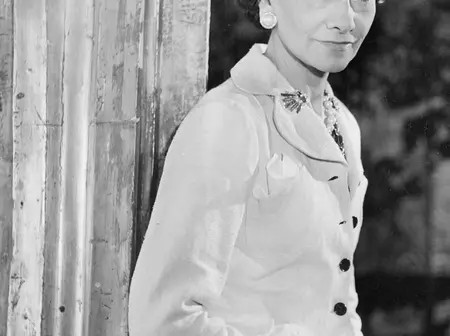Gucci, Dior, Prada, Chanel. You know the names, you’ve seen the logos, and you’ve watched your favourite celebrities feature them from Nairobi to New York.
These brands are global status symbols, but they all started with one thing in common: a founder who put their own name on the label.
This is the story of the designers who did not just build fashion houses; they became the brand themselves, creating legacies that continue to define luxury today.
Gabrielle “Coco” Chanel opened her first millinery shop in Paris in 1910 and later expanded into ready-to-wear and couture under the Chanel name.
The house is best known for the little black dress, the Chanel suit and the No. 5 perfume, and the founder’s surname remains the brand identifier.
Christian Dior founded his fashion house in Paris in December 1946 and presented the debut couture collection, later known as the New Look, in February 1947.
The Dior name is associated with couture, ready-to-wear, accessories and perfumes.
Louis Vuitton began as a trunk-maker in Paris in 1854 when its founder, Louis Vuitton, opened a luggage workshop. The Louis Vuitton name and the LV monogram now identify a global luxury house specialising in leather goods, accessories and ready-to-wear.
Guccio Gucci founded a leather goods and luggage workshop in Florence in 1921 and the family name became the business’s trade name as it diversified.
Gucci is known for leather handbags, accessories, clothing and the double-G motif.
Prada traces its origins to a Milan leather goods shop opened by Mario Prada in 1913 and the family surname continued as the company brand. The label is recognised for leather goods, fashion and accessories, and for its later expansion under family leadership.
Cristóbal Balenciaga established his first couture house in Spain in 1917 and later opened in Paris in 1937, where the Balenciaga name became associated with precise tailoring.
The house today trades under the Balenciaga name across clothing, accessories and footwear.
Hubert de Givenchy established Givenchy in 1952 and built a reputation for elegant couture and evening wear. The Givenchy name remains the house brand for clothing, accessories and fragrances.
Yves Saint Laurent founded his label in 1961 and later established Saint Laurent Rive Gauche to bring ready-to-wear into the Paris fashion scene.
The designer’s name continues as the trade name for both apparel and accessories.
Gianni Versace launched his eponymous label in Milan in 1978 and became known for bold prints, vivid colours and stage-ready glamour.
The surname is used across tailoring, fragrances, eyewear and lifestyle products.
Valentino Garavani founded his couture house in 1960 and established Valentino as a name associated with red-carpet gowns and romantic silhouettes. The Valentino surname is used across couture, ready-to-wear, accessories and fragrances.
Ralph Lauren began his business with menswear and neckwear in 1967 and expanded the Ralph Lauren name into a global lifestyle brand.
Calvin Klein launched his label in 1968 and the Calvin Klein name became especially prominent in underwear, denim and fragrance.
Tom Ford established an eponymous label in 2005 after a career as a creative director at major fashion houses and the Tom Ford name brands luxury clothing, accessories and beauty.
Marc Jacobs founded his own label in 1986 and later produced diffusion collections under his name while also serving as creative director at other houses.
)
Donna Karan launched her eponymous label in 1984 and later the DKNY diffusion line, using her surname as the brand identifier.
Lee Alexander McQueen founded his label in 1992 and became known for dramatic runway shows and crafted tailoring; the founder’s name remains the house’s brand.
)
Alexander McQueen trades under the name for clothing, accessories and footwear.
)
Stella McCartney established her own house in 2001 using her full name and has emphasised sustainable practice in her womenswear and accessories lines.
Vera Wang began as a bridal designer in 1990 and the Vera Wang name became synonymous with wedding gowns and evening wear.
)
The brand now uses the founder’s surname across bridal, ready-to-wear and fragrance lines.
Thomas Burberry founded the company in 1856 and the Burberry name is historically linked to outerwear, particularly the trench coat.
)
The Burberry surname and the check pattern remain central to the brand’s visual identity.
)
Kenzo Takada founded a label under his given name in 1970 and the brand became known for colourful prints and a multicultural aesthetic.
)
Jean-Paul Gaultier founded his eponymous label in 1982 and gained recognition for theatrical design and the reinterpretation of traditional silhouettes.
Franco Moschino founded Moschino in 1983 and built a reputation for playful, irreverent designs; the family name became the trade name for the house.
)
The Moschino label continues to operate under the founder’s surname across apparel and accessories.
)
Domenico Dolce and Stefano Gabbana founded their label together in 1985 and the brand name combines both surnames.
Dolce & Gabbana trades under the founders’ names across clothing, accessories, fragrance and licensing.
Christian Louboutin built a brand under his own name in 1991 and is widely identified with red-soled high-heeled shoes.
)
The Louboutin surname is the registered trade name for the footwear house.
Emilio Pucci lent his surname to the brand in 1947, famous for colourful geometric prints and silk scarves, which began as a personal collection.

Leave a Reply